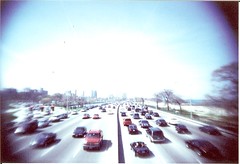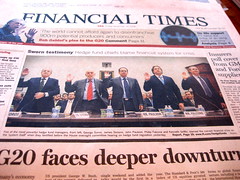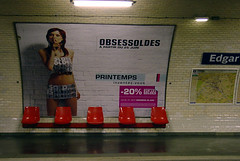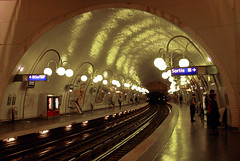Thursday, March 5, 2009 — ISSN 1529-1057
Register Today and Prepare for the Approaching Recovery: IBTTA’s Workshop on Managing in an Era of Changing Economic Times, April 19-21, 2009 in San Francisco, CA
Join IBTTA in San Francisco for power-packed educational sessions and walk away with a world of knowledge on better managing your organization today and preparing for the approaching economic recovery. Learn how global issues are affecting your organization and the toll industry, the goals and efforts of the U.S. stimulus program, how to build a cost-conscious culture and make tough decisions, how to position your agency for unique opportunities during this slowdown, solid financing strategies and more. This is one meeting you don’t want to miss! Visit IBTTA’s website to view the preliminary agenda, make your travel arrangements and register today!
AVIATION
1) BWI Airport Uses Twitter to Update @travelers
Link to story on IntoMobile:
http://www.intomobile.com/2009/03/04/bwi-airport-uses-twitter-to-update-travelers.html
Link to BWI Twitter page: http://twitter.com/BWI_Airport
2) Hong Kong Airline Apologizes for Airport Tantrum Video
Link to AP story:
http://www.google.com/hostednews/ap/article/ALeqM5gJFHKJTt041ELxDCYFvCwvDOevswD96NPQDO0
Link to YouTube video: http://www.youtube.com/watch?v=xbVw7entkxg
RAILROADS
3) Locomotive Cameras May Follow Metrolink Crash Probe
Link to Bloomberg News story:
http://www.bloomberg.com/apps/news?pid=20601087&sid=aUbV7DHy9GxM
SAFETY / SECURITY
4) NTSB Official Sees Threat in Cell Phone Use by Train Crews
Link to AP story:
http://www.google.com/hostednews/ap/article/ALeqM5j3Z45uDic1fZCfx8hT1T0-Qqd0cwD96NHLMG0
TELEMATICS
5) Organic Grocer Uses Tech to Reduce Carbon Footprint
Telematics solution features real-time vehicle tracking, mileage information, SMS messaging and live traffic information.
Link to story in Progressive Grocer:
http://www.progressivegrocer.com/progressivegrocer/content_display/supermarket-industry-news/e3ib7a02a35762c94344de1767457f865d8
TRANSIT
6) Lynchburg, Virginia Area’s Mass Transit Maps Now a Click Away
Link to story in The News & Advance:
http://www.newsadvance.com/lna/news/local/article/lynchburg_areas_mass_transit_maps_now_a_click_away/14067/
News Releases
1) New Mexico DOT Announces New Hotline to Take Reports of Fraud, Waste, Abuse or Misconduct
2) 2009 World Games in Kaohsiung: Bilingualism in Public Transport
Solicitation
– Call for Tenders – Framework Contract to Provide Technical, Legal and Organizational Support for Implementation of ITS Action Plan – European Commission
http://ec.europa.eu/dgs/energy_transport/tenders/2009_en.htm
Upcoming Events
1st International Summit on the State of the Connected Vehicle – April 16-17 – Detroit
http://www.sae.org/events/scv/
Today in Transportation History
1979 **30th anniversary** – Voyage 1 made its closest approach to Jupiter.
http://voyager.jpl.nasa.gov/science/planetary.html
=============================================================================================
The Transportation Communications Newsletter is published electronically Monday through Friday.
To subscribe send an e-mail to: TCNL-subscribe@googlegroups.com
To unsubscribe send an e-mail to: TCNL-unsubscribe@googlegroups.com
TCN archives: http://groups.yahoo.com/group/transport-communications
Questions, comments about the TCN? Please write the editor, Bernie Wagenblast at i95berniew@aol.com.
© 2009 Bernie Wagenblast
 The low-carbon fuel standard, if approved next month by the state’s Air Resources Board, would be the first in the nation to restrict greenhouse gases produced by a fuel, from its source to its burning.
The low-carbon fuel standard, if approved next month by the state’s Air Resources Board, would be the first in the nation to restrict greenhouse gases produced by a fuel, from its source to its burning.























